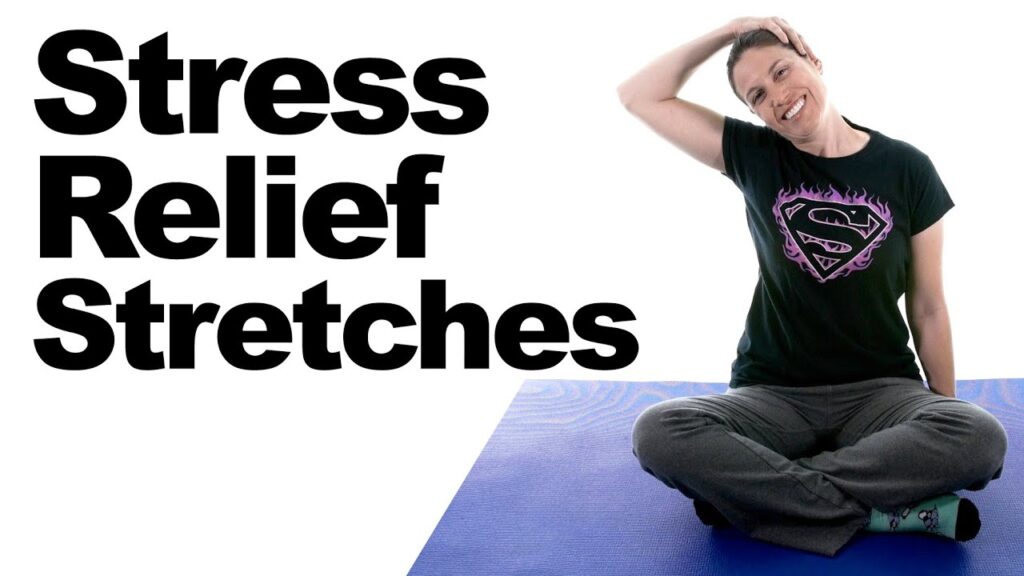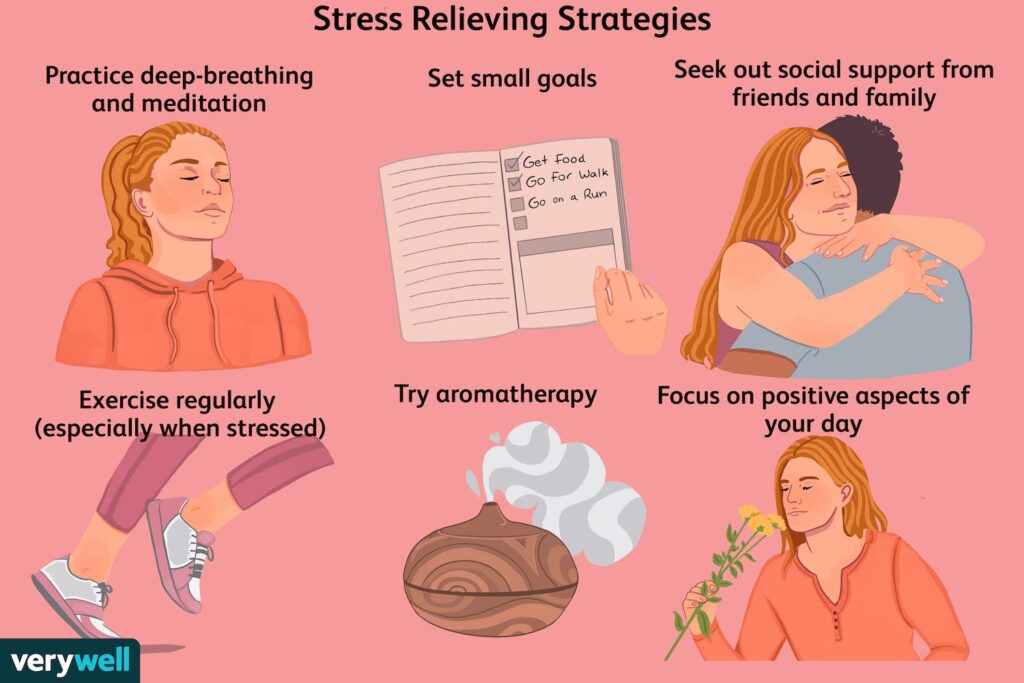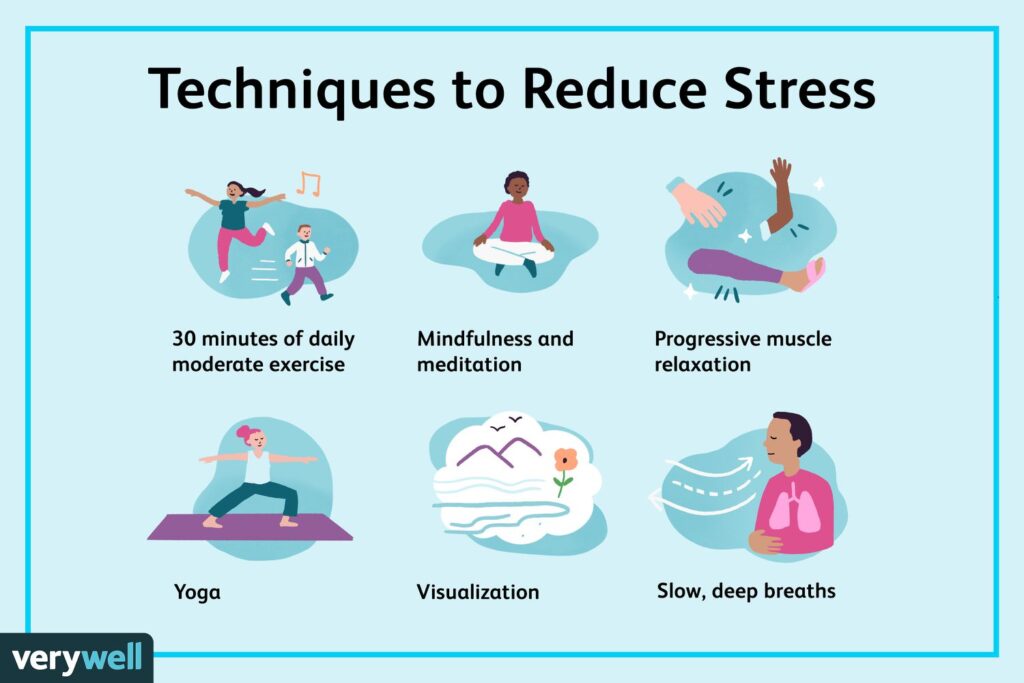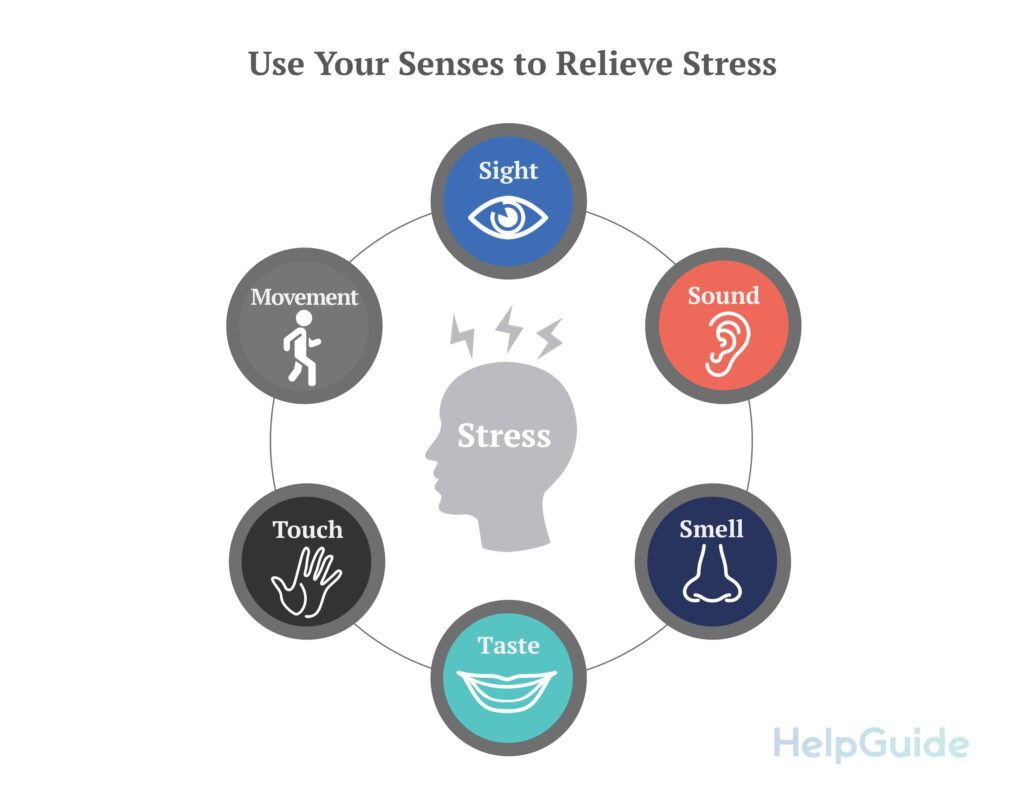In today’s fast-paced world, stress has become an unwelcome, yet pervasive companion. Whether it’s work deadlines, financial worries, relationship issues, or the constant barrage of information from the news, stress can manifest in various ways, impacting our physical and mental well-being. Recognizing the detrimental effects of chronic stress is the first step towards reclaiming your inner peace. Fortunately, you don’t need expensive retreats or exotic vacations to find relief. Your home can be transformed into a sanctuary of calm with a variety of accessible and effective stress relief activities.
This comprehensive guide explores a wealth of activities you can integrate into your daily routine to manage and mitigate stress from the comfort of your own home. From creative pursuits to mindfulness practices, physical activities to comforting rituals, discover the tools and techniques to create your personalized stress-busting haven.

I. Mindful Moments: Cultivating Inner Peace
Mindfulness practices are powerful tools for anchoring yourself in the present moment, reducing rumination about the past or anxieties about the future. These techniques help you become more aware of your thoughts, feelings, and sensations without judgment, fostering a sense of calm and acceptance.
- Meditation: Meditation is a cornerstone of stress reduction, offering a profound way to quiet the mental chatter and connect with your inner self.
- Guided Meditation: Perfect for beginners, guided meditation involves following the voice of an instructor who guides you through visualization exercises, breathing techniques, and affirmations. Apps like Headspace, Calm, and Insight Timer offer a vast library of guided meditations on various topics, such as stress relief, sleep improvement, and anxiety management.
- Mindfulness Meditation: Focus your attention on your breath as it enters and leaves your body. When your mind wanders (and it will!), gently redirect your focus back to your breath. Start with 5-10 minutes and gradually increase the duration as you become more comfortable.
- Loving-Kindness Meditation: Cultivate feelings of compassion and kindness towards yourself and others by silently repeating phrases like, “May I be well, may I be happy, may I be peaceful, may I be free from suffering.” Extend these wishes to loved ones, acquaintances, neutral people, and even those you find challenging.
- Deep Breathing Exercises: Deep breathing techniques are a simple yet effective way to activate the parasympathetic nervous system, which helps calm the body and mind.
- Diaphragmatic Breathing (Belly Breathing): Place one hand on your chest and the other on your stomach. Inhale deeply through your nose, allowing your stomach to rise while keeping your chest relatively still. Exhale slowly through your mouth, feeling your stomach fall.
- Box Breathing: Inhale for a count of four, hold your breath for a count of four, exhale for a count of four, and hold your breath for a count of four. Repeat this cycle several times.
- Alternate Nostril Breathing (Nadi Shodhana): Close your right nostril with your thumb and inhale deeply through your left nostril. Then, close your left nostril with your ring finger, release your right nostril, and exhale slowly. Repeat this process, alternating nostrils with each breath.
- Mindful Journaling: Writing down your thoughts and feelings can be a cathartic way to process emotions and gain clarity. Focus on the present moment and describe what you’re experiencing without judgment.
- Gratitude Journaling: Take a few minutes each day to write down things you’re grateful for. This simple practice can shift your perspective and cultivate a sense of appreciation.
- Morning Pages: Write three pages of stream-of-consciousness writing first thing in the morning. Don’t worry about grammar or coherence, just let your thoughts flow freely onto the page.
- Emotional Release Journaling: Explore your feelings in detail, allowing yourself to express anger, sadness, or frustration without censoring yourself.
- Body Scan Meditation: Lie down comfortably and systematically bring your attention to different parts of your body, noticing any sensations without judgment. This practice helps you become more aware of physical tension and discomfort, allowing you to release it more effectively.

II. Creative Expression: Unleashing Your Inner Artist
Engaging in creative activities can be a powerful way to tap into your imagination, express your emotions, and find flow – a state of complete absorption and enjoyment. These activities can provide a much-needed escape from the pressures of daily life.
- Painting and Drawing: Unleash your inner artist by experimenting with different mediums like watercolor, acrylics, pencils, or charcoal. Don’t worry about creating a masterpiece; focus on the process and the joy of self-expression.
- Coloring Books for Adults: Adult coloring books have become increasingly popular as a stress-relieving activity. The repetitive motion of coloring can be incredibly calming and meditative.
- Writing: Whether it’s poetry, short stories, or journaling, writing can be a powerful outlet for emotions and a way to explore your thoughts and feelings.
- Playing a Musical Instrument: Learning to play a musical instrument can be challenging but also incredibly rewarding. The act of creating music can be deeply therapeutic and provide a sense of accomplishment.
- Dancing: Put on your favorite music and let loose! Dancing is a great way to express yourself, release tension, and boost your mood. You don’t need to be a professional dancer; just move your body and enjoy the music.
- Gardening: Getting your hands dirty in the garden can be incredibly grounding and therapeutic. The act of nurturing plants and watching them grow can be deeply satisfying and provide a sense of connection to nature.
- Knitting, Crocheting, or Sewing: These crafts involve repetitive motions that can be calming and meditative. Creating something beautiful and functional can also be a source of pride and accomplishment.
- Cooking or Baking: Cooking and baking can be creative and therapeutic activities. Experiment with new recipes, enjoy the aromas, and savor the final product. Sharing your creations with others can also be a rewarding experience.

III. Physical Movement: Releasing Tension and Boosting Mood
Physical activity is a natural stress reliever. Exercise releases endorphins, which have mood-boosting and pain-relieving effects. It also helps to reduce muscle tension and improve sleep quality.
- Yoga: Yoga combines physical postures, breathing techniques, and meditation to promote relaxation and reduce stress. Numerous online yoga classes cater to all levels, from beginners to advanced practitioners.
- Pilates: Pilates focuses on strengthening the core muscles and improving posture. It can help to relieve back pain, reduce tension, and improve overall body awareness.
- Tai Chi: Tai Chi is a gentle form of exercise that involves slow, flowing movements. It’s known for its calming and meditative qualities and can help to improve balance and coordination.
- Walking: A simple walk in nature can be incredibly beneficial for stress relief. The fresh air, sunshine, and natural surroundings can help to clear your mind and boost your mood.
- Stretching: Simple stretching exercises can help to release muscle tension and improve flexibility. Focus on areas where you tend to hold tension, such as your neck, shoulders, and back.
- Dancing: As mentioned earlier, dancing is a fun and energetic way to relieve stress. Put on your favorite music and move your body!
- Home Workout: Even a short, 20-30 minute workout can make a significant difference in your stress levels. There are plenty of free workout videos available online that you can follow.

IV. Creating a Relaxing Home Environment: Your Personal Oasis
Your home environment can significantly impact your stress levels. Creating a relaxing and comfortable space can help you to feel more calm and at peace.
- Decluttering and Organizing: A cluttered and disorganized home can contribute to feelings of stress and overwhelm. Take some time to declutter and organize your space.
- Creating a Cozy Reading Nook: Designate a comfortable space in your home where you can relax and read a book. Add comfortable seating, soft lighting, and a warm blanket.
- Bringing Nature Indoors: Plants can help to purify the air and create a more calming and inviting atmosphere. Add some houseplants to your home to bring a touch of nature indoors.
- Aromatherapy: Essential oils can have a powerful effect on mood and stress levels. Use a diffuser to fill your home with calming scents like lavender, chamomile, or sandalwood.
- Creating a Spa-Like Bathroom: Transform your bathroom into a relaxing oasis with soft towels, scented candles, and bath salts. Take a long, hot bath or shower to unwind and release tension.
- Sound Therapy: Soothing sounds like nature sounds, classical music, or white noise can help to calm your mind and reduce stress.
- Dim Lighting: Harsh lighting can be stimulating and contribute to stress. Use dimmers to create a more relaxing and inviting atmosphere.
- Comfortable Temperature: Maintain a comfortable temperature in your home to avoid feeling too hot or too cold.

V. Connecting with Others: Building Social Support
Social connection is a vital component of well-being and can provide a buffer against stress. While physical distancing may limit in-person interactions, there are still many ways to connect with loved ones.
- Phone Calls and Video Chats: Reach out to friends and family for a phone call or video chat. Sharing your thoughts and feelings with someone you trust can be incredibly helpful.
- Writing Letters or Emails: Take the time to write a heartfelt letter or email to someone you care about. This can be a more meaningful and personal way to connect than a quick text message.
- Virtual Game Nights: Organize a virtual game night with friends or family. Playing games together can be a fun and engaging way to connect and laugh.
- Online Support Groups: Join an online support group for people who are experiencing similar challenges. Sharing your experiences and connecting with others can provide a sense of community and support.
- Social Media (Mindfully): Use social media to connect with friends and family, but be mindful of how much time you’re spending online. Limit your exposure to negative or stressful content.
VI. Establishing Healthy Habits: Supporting Overall Well-being
Adopting healthy habits is crucial for managing stress and promoting overall well-being.
- Prioritize Sleep: Aim for 7-8 hours of quality sleep each night. Create a relaxing bedtime routine to help you wind down before sleep.
- Eat a Balanced Diet: Nourish your body with healthy, whole foods. Avoid processed foods, sugary drinks, and excessive caffeine and alcohol.
- Limit Screen Time: Excessive screen time can contribute to stress and anxiety. Set limits on your screen time and take breaks throughout the day.
- Stay Hydrated: Drink plenty of water throughout the day to stay hydrated. Dehydration can contribute to fatigue and stress.
- Practice Self-Care: Make time for activities that you enjoy and that help you to relax. This could include reading, taking a bath, listening to music, or spending time in nature.
- Set Boundaries: Learn to say no to commitments that you don’t have time for or that will add to your stress.
- Seek Professional Help: If you’re struggling to manage your stress on your own, consider seeking professional help from a therapist or counselor.
Conclusion: Your Personalized Path to Stress Relief
Stress is an inevitable part of life, but it doesn’t have to control you. By incorporating these stress relief activities into your daily routine, you can create a more peaceful and balanced life from the comfort of your own home. Experiment with different techniques and find what works best for you. Remember, self-care is not selfish; it’s essential for your well-being. Embrace the power of your home as a sanctuary of calm and embark on your personalized journey to stress relief. Your well-being is worth the investment.